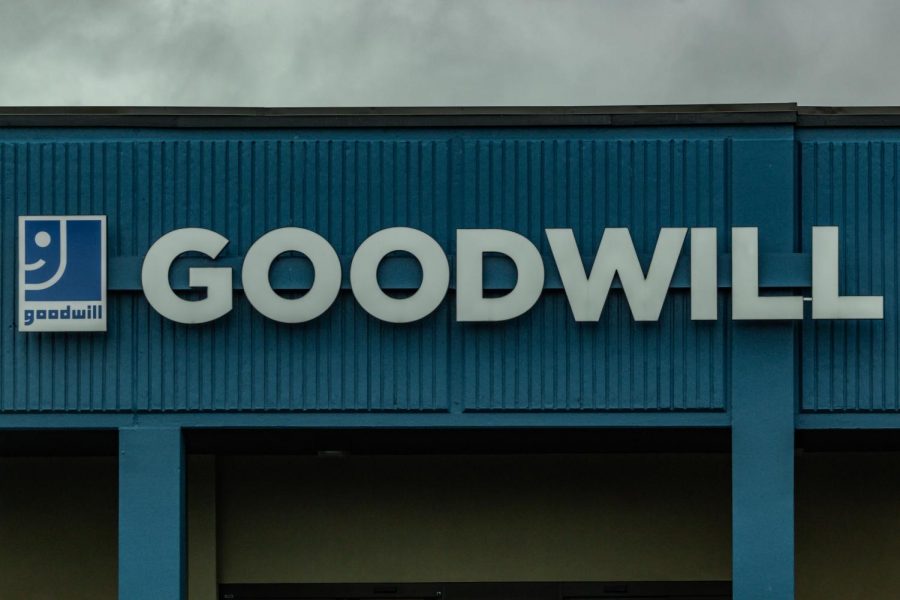Price Gouging the Poor: The Rising Prices in Thrift Stores
Goodwill Industries’ prices are increasing, hurting the lower class
A decade ago, shopping second hand wasn’t something people bragged about. Thrift stores were seen as unsanitary, children who had to wear secondhand clothing were mocked in school, and as a whole, it was a symbol of poverty. Thanks to the millennial and Gen Z population, there has been a cultural shift on the act of shopping second hand, which is now associated with environmental sustainability, an exciting pursuit to shop for unique items, and a positive outlook on frugality. However, thrift stores across the country have been increasing their prices at the detriment of the lower class, and consumers don’t know who to blame.
Secondhand shopping is a growing industry, and according to the U.S. Census Bureau, total employment in the thrift store industry in the United States is more than 170,000 people, with a significant bump of 28% occurring between 2007-2012. When regular businesses grow to such a scale, a large portion of their income becomes designated toward taxes. But in the case of non-profit organizations such as thrift stores, they are exempt from federal income taxes under subsection 501(c) of the Internal Revenue Service tax code. In addition, second-hand shops receive their products for free; after all, we’re the ones who donate to them. Thrift stores still need to pay for their employees’ wages, the rent to operate in a physical store, and the costs of loading and unloading products across different locations, but by design, they have a profitable business model. Many consumers argue that those operating costs shouldn’t have changed throughout the years, but the prices on the goods have, so what gives?
As stated by the Association of Resale Professionals, one of the most profitable thrift stores is Goodwill Industries, which is responsible for about one-third of all thrift store industry revenues in the United States. Therefore, Goodwill serves as a model for other second-hand stores, and their price increases throughout the years might not seem drastic to those who can afford it but are damaging to people in poverty. As a non-profit, they must report how valuable each item is to the IRS so their donors can deduct their contributions from their taxes. This shows proof of how much the prices have increased over the years. One valuation guide from 2010 shows all of their goods valued with flat rates, with examples such as $4.00 for shirts, $6.00 for jeans, and $6.00 for shoes. In a 2020 valuation guide, the costs range from $2–12.00 for women’s shirts, $4–21.00 for jeans, and $4–9.00 for tennis shoes because there are also price differences on the style of garments, and whether they belong in the men or women’s sections of the store. Many of these prices have doubled, if not tripled or quadrupled.
Their response to the rising prices of goods is that they are simply responding to the cost of expansion and labor. “The primary reason for the change, which we publicized in all our stores beginning Dec. 1 [of 2016], is that our operational costs have increased due to changes in health care, Department of Labor regulations, wages and benefits, insurance and other related expenses,” said Jaymie Eichorn, a spokeswoman for Goodwill of Northwest North Carolina.
Furthermore, to gauge the way they should calculate the increased value of their secondhand goods, Goodwill Industries conducted a “competitive market study” to compare their prices to that of other thrift stores, including for-profit stores, which create a generous margin that Goodwill may use to price their items.
With the extra revenue from these rates, one would hope Goodwill Industries, like all other non-profit thrift shops, is giving back to their community through equity and outreach programs. However, the impact of the increase in valuation on secondhand goods has real-world effects on low-income families who rely on thrift shopping to replace their old work shoes, furnish their homes, and clothe their children. In a study on the correlation between impoverished families and secondhand shopping, Spencer James from Brigham Young University writes, “When housing and other costs increase without a concomitant augmentation of salary or wages, families may obtain more items in [secondhand shops], where sales tax is generally not charged, and merchandise is typically priced below retail value. Both of these strategies can aid households in their efforts to stretch the family dollar”, so keeping the prices accessible should be the top priority. At the end of the day, it is unclear whether the extra profit that Goodwill and other thrift stores have been earning is worth the impact on the community.
Manifa Baghomian can be reached at: [email protected]


